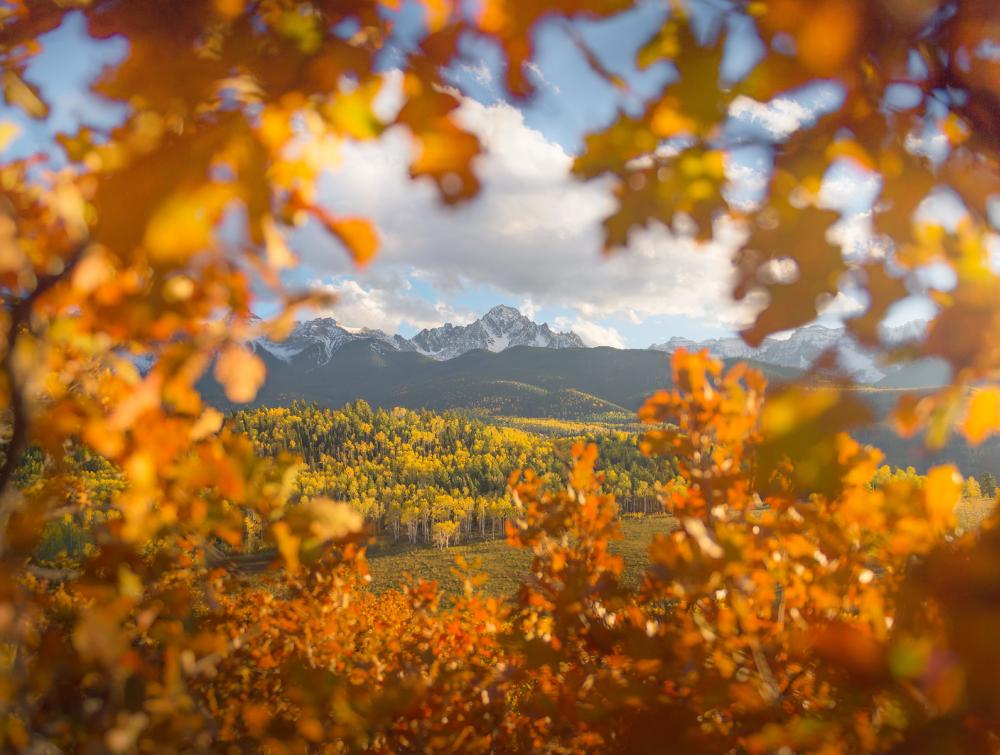Your Fall Camping Checklist

Mason Cummings, The Wilderness Society
Our fall camping checklist will help you prepare for exploring wilderness in the cooler months.
When deciding whether to camp this fall, remember that lower temperatures and fewer insects can make hikes more pleasurable. As school starts, crowds dwindle at your favorite wilderness spots, creating more opportunities for wildlife sightings. Elk, moose and deer are regulars in the mountains and migrating birds are everywhere.
Of course one of the most compelling reasons to camp in fall is the beauty of the leaves changing color. Depending on your latitude, fall foliage is usually most stunning from September through October, but can linger into November.
Here's more of what you need to know to plan your fall camping trip:
Fall Camping Checklist:
- Check the weather before you go: Don't let the challenges of fall weather spoil your camping plans. Look at forecasts ahead of time specific to the parks or campgrounds. In the event of unexpected weather, don't panic. It's often better to ride out bad weather than to hurriedly hike through it. Remember that warm weather can quickly turn. Depending on where you go, be prepared for the chance of snow, rain, or other severe weather.
- Pack layers: Fall is known for temperature fluctuations, so pack layers of breathable, water-resistant clothing. If you're backpacking, just be aware that extra clothes add additional weight. Essential items:
- thermal underwear
- sleeping cap
- gloves
- extra shoes
- winter jacket (even if the weather is predicted to be warm)
- Bring cold-weather sleeping gear:
- Sleeping bags: Always bring a sleeping bag that protects against temperatures lower than you expect, for example one labeled for 0-30 degrees F. There's nothing worse than freezing through the night, so bring two sleeping bags if you get cold easily.
- Bring a mattress pad or foam to provide an extra layer between your sleeping body and the cold ground.
- Consider packing a warm water bottle to snuggle up with in your sleeping bag.
- If you plan to bring a small propane heater, be sure it has various safety shut-offs and is labeled for indoor use to avoid carbon monoxide dangers.
- Prepare for rain and snow: Line your backpacks with plastic garbage bags to keep out moisture. And be sure to add the following to your camping checklist:
- water tight-containers and a tarp in case of rain
- extra plastic garbage bags for lining backpacks or protecting other items
- extra blankets, boots and a snow shovel, just in case
- Invest in a good tent and test it before you camp: Get a tent that has a full rain fly. Before leaving home, set up your tent in the backyard to make sure it’s functioning properly. Be sure to test all the zippers as well.
- Arrive early and setup with care:
- Remember, the days get shorter in fall, so be sure to allow yourself extra time to arrive at your campsite before dark.
- When you set up your campsite, secure your tent firmly in case of intense winds.
- Some animals can be more aggressive as winter nears, so beware bee hives and be sure to eliminate trash from your campsite to prevent bears.
- Keep your distance from wildlife and practice 'leave no trace' principles: Wildlife are often engaged in fall mating rituals so be careful to respect their space. Many wild areas where camping occurs are vulnerable to threats like overuse and development in the greater area, so always be sure to use 'leave no trace' camping practices.
- Leave more time for cooking: Cooking times are longer in low temperatures. Plan to rise early to heat warm liquids to sip for keeping warm throughout the day (as we noted above, a warm water bottle in your sleeping bag at night is nice too). Also, bring foods like:
- Easy to prepare items in case weather conditions prevent you from cooking
- Good fats like fish, nuts and avocados are also helpful as you burn calories on the trail
- Bring insect repellent: Don't forget to keep this on your camping checklist for those lingering biters.
- Be ready to make an emergency retreat: Bring extra money and be prepared to use it to eat out or spend the night in town if absolutely necessary. If you want to be extra cautious, you can always stay in a cabin, which may be available at national and state parks.
Another advantage to fall camping is that public lands like state parks and national forests may have reduced entrance fees after Labor Day.
